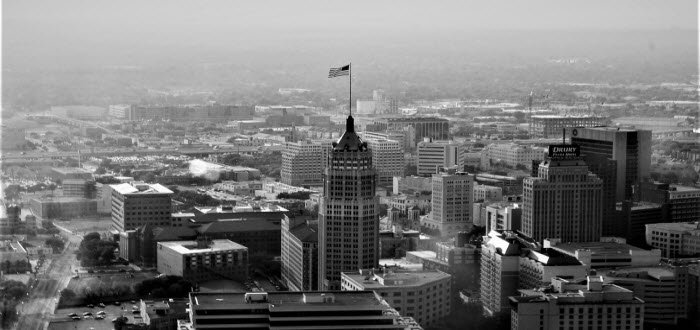Raub Report: 2020 Forecasts & Predictions
January 7, 2020

Happy New Year! It’s that time of year for Forecasts and Predictions. I have been a member for years of a Brokers Breakfast Group and each December we each make a forecast for the Year Ahead – will it be Better, the Same or Worse? This year the consensus was mostly the Same or Better, that is, things will stay pretty good. One vote was the same until politics gets in the way and then it may be worse.
I have been reading quite a few national forecasts and here is the consensus. Our commercial real estate outlook is stable, even though we are late in the cycle, and there is no immediate threat of recession within the next 12 months.
This is due to:
1. Current record high employment rate.
2. Low interest rates, which are projected to remain low and could go lower.
3. Steady, albeit slower, growth in corporate earnings.
One constraint on growth, which applies to San Antonio as well as nationally, is that it is hard to find new, qualified workers to hire, because, at full employment, the available pool of labor is small. Even those over 65 years of age are working longer, to top off their retirement savings and they are still fit enough to stay active and involved. Consequently, overall wage growth has been good, with the best gains at the lowest end of the pay scale. This is starting to close the infamous “inequality gap.”
In order for the U.S. to continue growth, in my view, we need to increase the amount of legal immigration into the United States, as we have over 7-million jobs available to be filled right now. We must target highly skilled and highly qualified folks to fill these jobs in order to increase U.S. productivity, add to our tax base, and ease the burden on Social Security (FICA taxes go to pay current retirees) and help service our massive debt.
San Antonio growth remained steady this year and should continue on this high plateau in 2020. The Dallas Federal Reserve has a Business Cycle Indicator, a broad measure of economic activity in our fair city. It shows that 2019 was a big turn-around year for us. We saw a peak in 2014 that was well above the long term growth average, probably due to the shale fracking boom. Then, a decline began and continuing until it crossed under the long term average in 2018, however, in the last half of this year San Antonio has seen strong, above average growth. San Antonio employment growth started the year rather mild, but our job growth shot up, starting in the middle of the year. Strong sectors are construction, hospitality and business services. Wages are up 3+%, too!
As far as the sectors of commercial property, the national forecast is that Industrial will remain the most loved and Retail the least loved, with cap rates and new construction reflecting that bias. But in San Antonio, retail continues to be see strong growth with retail occupancy at 94.4%. Warehouse occupancy is at 92.2%, but it has shown some weakness over the past year. Office is still going strong, with nearly 1-million square feet of space being delivered to the market this year at 82% leased. So while Class A space is seeing strong absorption, the vacancy rate will stay just under 12%, which is the natural rate for office, (higher than the other sectors).
Home sales are up 6% over last year and home prices have increased 2%, showing the strength in home purchases. The strongest segment is entry-level homes, with 36% being under $200,000. It is very difficult for builders to build homes in this price range because of land costs, materials and labor costs. These are very small homes on very small lots, simply because that is the only way to make them affordable. Then, 56% of homes sales in San Antonio are between $200,000 and $500,000. So, 92% of the home sales in San Antonio are below $500,000. The market for pre-owned homes is still tight at only 3.5 months on the market, 6 months being considered a balanced market between buyers and sellers.
A big boost for San Antonio and Texas in the coming year will be from the long awaited passage of USMCA, aka Nafta II. Texas is the largest exporter state in U.S. at $315B, compared to California’s $115B. Oil and gas make up the largest part of our exports, and Mexico and Canada are big importers, as well as China. Autos are Texas’ second largest export, which is also a plus under USMCA.
Great Year Ahead! Happy New Decade!

